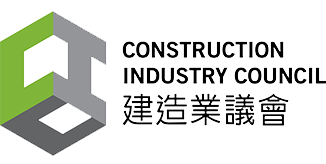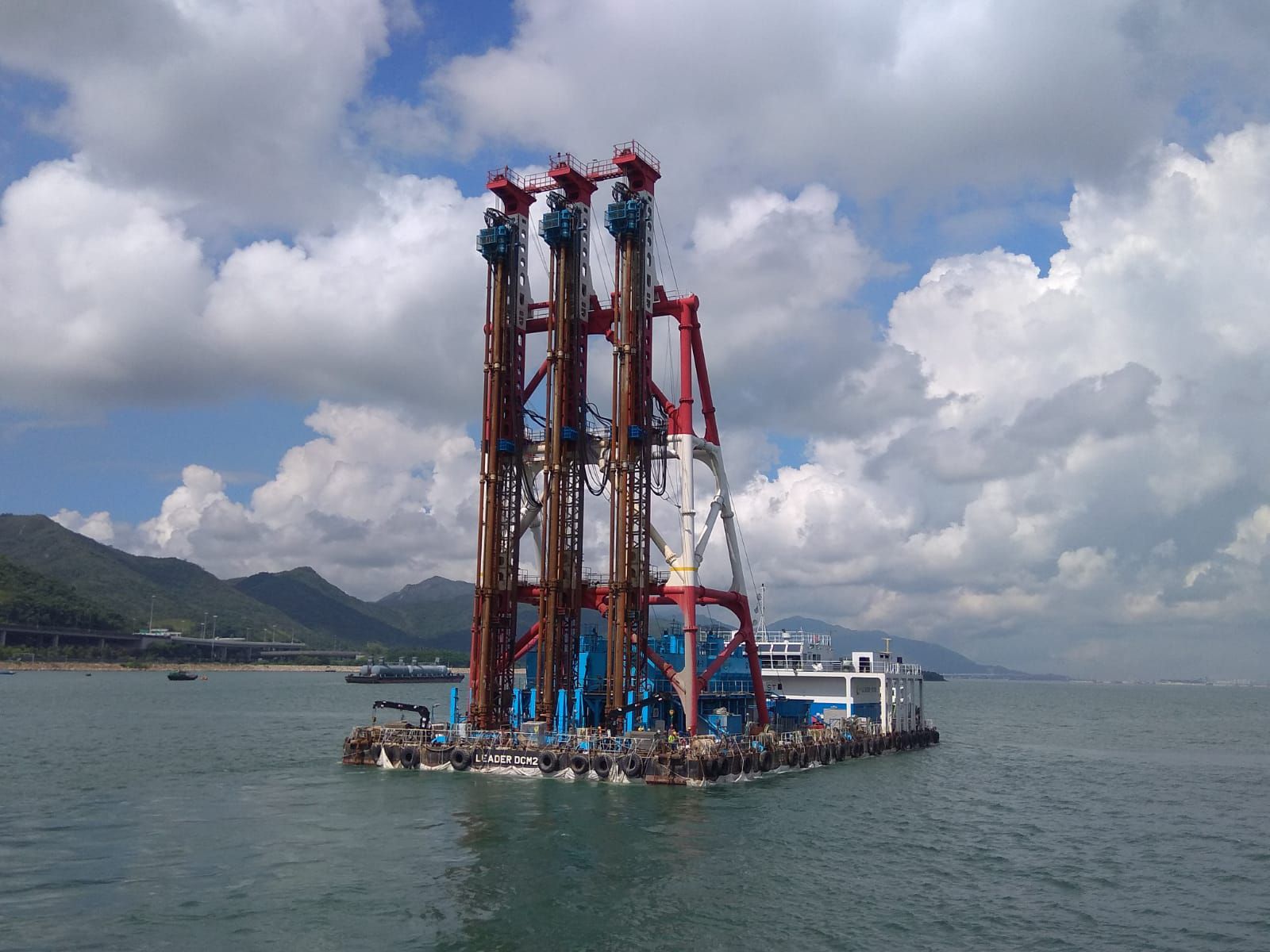Example of applications:
Low Cost Application(s):
- Legal register for applicable environmental statutory requirements
- Application for applicable permits and licences
- Establishment of environmental management plans to specify:
- actions to fulfill statutory environmental requirements and obligations
- actions to address environmental risks and opportunities
- environmental process control and site management procedures
- environmental inspection, monitoring, auditing and corrective action practices
- Measures to conform to Noise Control Ordinance (NCO) (Cap 400), e.g. noise barriers, noise enclosures, noise mufflers, equipment idling controls, etc.
- For civil works, implementation of the noise control measures specified below, to conform to the Noise Control Ordinance (NCO) (Cap 400):
- Use of Quality Powered Mechanical Equipment (QPME) type excavators
- Use of noise barriers to screen noisy works from noise-sensitive receivers
- Noise emision labels for handheld breakers and air compressors
- Restriction of noisy breaking works to less sensitive hours of the day
- Quality Powered Mechanical Equipment (QPME) type excavator-mounted breaker
- Noise barriers to screen breaking work from noise sensitive receivers
- Noise mufflers for excavator-mounted breakers
- Noise barriers to screen noisy works from noise-sensitive receivers
- Enclosure of stationary plant with noise enclosures
- Measures to conform to the Water Pollution Control Ordinance, Cap. 358, e.g. temporary drainage channels and catch-pits, surface run-off interception, protection of drainage system, installation of grey water system, rainwater retention, soil erosion prevention etc.
- For civil works during the process of utility trench excavation, deployment of wastewater treatment facilities on site to treat wastewater, to meet the conditions of the effluent discharge license prior to discharge
- For civil works during marine dredging and filling, implementation of the sediment control measures specified below, to conform to the Dumping at Sea Ordinance, Cap. 466:
- Application for dumping permit from the EPD to be made before marine dumping and related loading operations
- Automatic self-monitoring system for all dumping vessels which records their position and loading and dumping operations
- Tightly closed grabs during dredging to restrict the loss of fine sediment to suspension
- Careful handling of the dredged material to avoid splashing into surrounding waters during loading
- Silt curtain to screen the marine works to control sediment suspension. The silt curtain should be made from a permeable, durable, abrasion-resistant membrane like geotextile and be mounted on a floating boom structure surrounding the grab, and should extend to the sea bottom
- Work barges positioned by tug boats and winches to avoid stirring up of sediment by thrusters in shallow areas
- Prevention of effluent discharge to stormwater drains at site boundary, in order to conform to the Water Pollution Control Ordinance, Cap. 358. Practical steps include:
- Sealing of footings of hoardings to prevent seepage of surface run-off out of construction site
- Installation of wheel washing facilities, including a high-pressure water jet, at each site exit to prevent site vehicles from carrying dust and soil onto public roads
- Construction of temporary perimeter drainage channels and catch pits along the site boundary to intercept surface run-off before it flows out of the construction site. The temporary drainage system should be suitably maintained, with the deposited silt and grit being removed regularly to ensure the system directs the surface run-off to wastewater treatment facilities at all times
- Application for a water discharge license for effluent discharge from construction sites, install wastewater treatment facilities on site, and conduct analysis to test waste water samples in order to meet waste discharge license requirements
- Measures to meet air emissions control regulations, e.g. dust screens, impervious sheeting, debris chutes, water suppression, vacuum cleaners for grinding work, hard paving, permanent seeding and planting, haul roads, wheel washing, odorous materials control, open burning prevention
- Monitoring of use of diesel to ensure that ultra-low sulphur diesel (ULSD) or biodiesel is used
- Hoarding along the site boundary to avoid dispersion of construction dust out of working areas, in order to conform to Air Pollution Control (Construction Dust) Regulation, Cap. 311R. Practical measures include:
- 2.4m high hoarding with footing sealed by cement grout
- Double deck hoarding for building construction works
- 1.8m high transparent hoarding adjoining public roads
- Flexible tarpaulin hoarding for temporary use
- Hoarding lined with artificial turf
- Roll-down dust screen at site entrance
- Impervious dust screen for neighborhood
- For civil works, the dust control measures specified below conform to Air Pollution Control (Construction Dust) Regulation, Cap. 311R:
Earthworks: - Spraying of water on the surface of dusty material before, during and after excavation
- Minimisation of the dropping height of soil and dusty material during loading and unloading
- Use of dump trucks equipped with mechanical covers to transport dusty material
- Washing of vehicles to remove any dusty materials before leaving the site
- Use of water sprinklers or water bowsers to keep the haul road wet
Rock Breaking: - Spraying of water on the surface continuously during rock breaking work
Utility Trench Excavation: - Spraying of water on road surface before and during concrete breaking and excavation
- Dust screens to shield dusty work
- Covering up of dusty stockpiles entirely with impervious sheeting
Dusty Stockpiles: - Spraying of water on the surface of dusty stockpiles
- Covering up of dusty stockpiles entirely with impervious sheeting
- Compacting or hydroseeding large stockpiles used for prolonged storage
Slope Stabilisation Work: - Continuous wetting of the surface during soil nail/rock dowel operation with water or cover with tarpaulin during drilling
- Enclosed cement batching process for shotcreting
- Shelter cement bags for shotcreting
- Dust screens around the drilling area
- For civil works during the process of utility trench excavation, the specific smoke control measures below to conform to the Air Pollution Control
(Smoke) Regulation: - Diversion of plant exhaust away from pedestrian roads
- Use of tarpaulin enclosures for utility trenches
- Compliance with the Construction Waste Disposal Charging Scheme (Charging Scheme). Construction waste producers, such as construction contractors, renovation contractors or premises owners, prior to using government waste disposal facilities, need to open a billing account with the Environmental Protection Department and pay the construction waste disposal charge
- Trip ticket system:
- Provision and maintenance of a weigh bridge
- Checking of records to ensure no overloaded dump trucks enter disposal facilities
- Checking of records to ensure all dump trucks disposing of construction and demolition waste use weigh bridge before leaving the site
- Checking of records to ensure there is no difference in the weight of dump trucks leaving the site and arriving at disposal facilities
- Avoidance of asbestos
Sustainability KPI:
- Number of fines, tickets or warnings received from public authorities per month, per project (no.)




